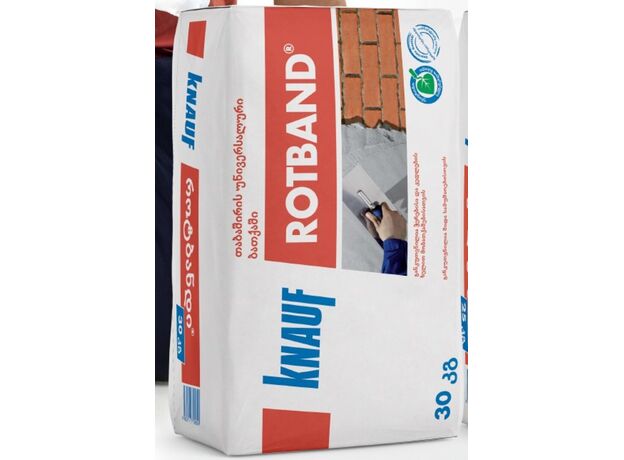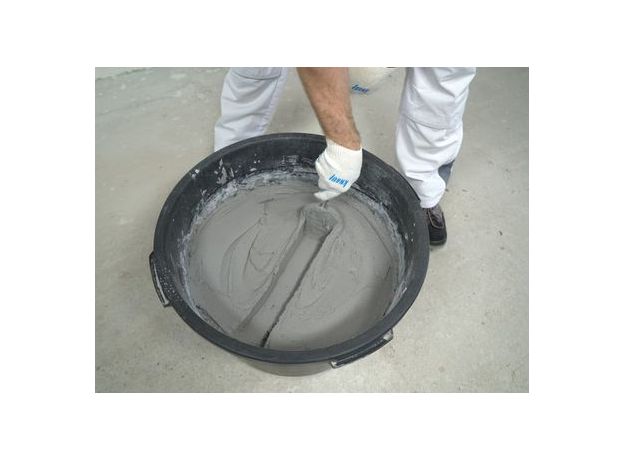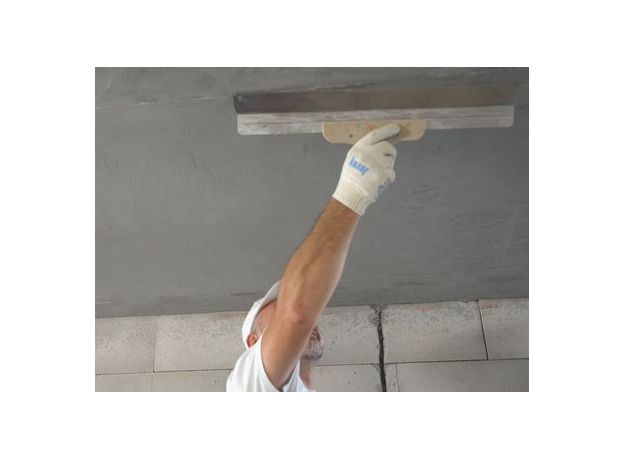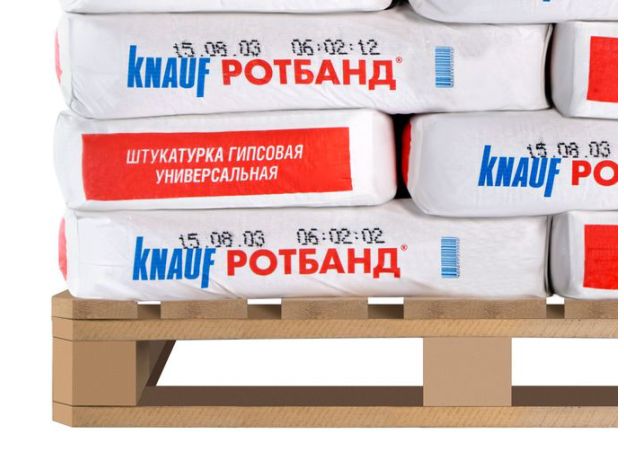Universal Gypsum Plaster knauf rotband 30kg
Please sign in so that we can notify you about a reply
Description
Knauf-Rotband is a universal dry plastering mixture based on gypsum binder with additives that ensure high adhesion.
It is intended for manual high-quality plastering of ceilings and walls with a regular dense base (concrete, brick, cement plaster), as well as for plastering polystyrene foam, cement-bubble tiles, interior surfaces of rooms with normal humidity, kitchens and bathrooms.
Especially recommended for concrete ceilings and walls with a smooth surface.
Recommendations for use
Cleaning
Clean the surface from dirt and dust. Remove the oil left from the molds on the concrete. Remove loose parts from the surface, protect metal elements from corrosion. The base must be dry and solid, with a temperature not lower than +5C.
To destroy
To prevent uneven adhesion of the solution, highly absorbent surfaces such as silicate and ceramic bricks, aerated concrete should be treated with water-diluted (1:3) primer with Knauf-Grundirmittel or Knauf Rotband-Grund using a brush roller or sprayer.
Dense, smooth, weakly or non-moisture absorbent surfaces, such as concrete, cement plaster, polystyrene foam tiles are pre-treated with ground Knauf-betokontakt in order to improve the adhesion of the plaster to the surface. After applying, wait for the soil to dry. Protect the primed surface from dust.
Preparation of fermentation
Pour ~18L of clean cold water into a plastic tank to prepare a 30kg bag of dry mix. At first, put 5-7 cups of dry sabatkashe mass in water and stir. After that, pour the rest of the mixture into the bag and mix with a hand mixer until a homogeneous mass is obtained without leaving any lumps. Leave for 5 minutes and stir once.
Recommendations
For quick drying of the plaster, it is necessary to provide good airing (ventilation) of the room.
Before applying the decorative coating, the plaster must be primed with Knauf-Tiffengrund.
In addition to water, it is not allowed to add other components to the fermentation in the bath.








